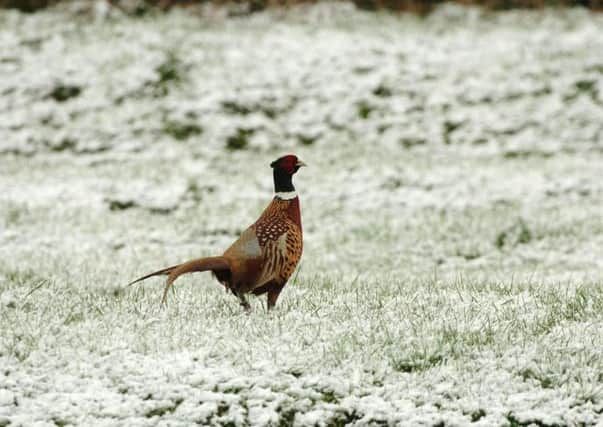Managing pheasants benefits all wildlife


Why did the pheasant cross the road? Well, it could be for a number of reasons: the predation levels are so high that it had to find an environment where sensible predation control was carried out; it had nothing to eat, so had to forage in an area that has been sensitively planted and managed for wild and game birds; or there was no suitable habitat in which it could lay a clutch of eggs that could be hidden from sight and remain undisturbed.
The pheasant may be ubiquitous in the British Isles, but the management of this prolific gamebird is the subject of much research and development over many decades. This management has real environmental benefits (especially for farmland birds) as well as strong economic drivers and the gamebird itself is a superb food source.
Advertisement
Hide AdAdvertisement
Hide AdThe pheasant has a long history of residence here. There is some debate over the success of various possible introductions dating back to the Romans, but it is generally agreed that pheasants were common by the 15th century.
Despite its introduced status, the conservation of the pheasant is important because of its long history of naturalisation and significance as a symbol of our traditional countryside.
Like any livestock, gamebirds require proper management, legislation and guidance to maintain good practice. There is nothing wrong with regarding the rearing of gamebirds as an industry – we accept the farming of other livestock, so why are some people’s perceptions of game any different?
We know that woodlands are usually better places for wildlife following game management activities. Game-managed woodlands have better shrubby edges than other similar woodlands, they have more open spaces and sunnier rides. There are more woodland birds and wood-edge butterflies in game woods than in other woods.
In a similar vein, birds of open farmland are maintained at higher numbers on areas that have a variety of game crops and gamebird feeders during the winter. The research work that documents these benefits of management for pheasants is objective and has been, or is in the process of being, published in peer-reviewed scientific journals.
However, the Game & Wildlife Conservation Trust also recognises that there are challenges with pheasant management and, in particular, releasing of these game birds. The GWCT has undertaken a substantial amount of research on the subject of releasing for shooting and its impacts on habitats and wildlife.
We have looked properly at some of the wider issues of releasing pheasants and the associated impacts and we now have good information on aspects of this.
We also have had many welcome discussions about other, as yet unresolved, issues with government bodies and conservation groups and are always ready to provide information to anyone who is interested.
Advertisement
Hide AdAdvertisement
Hide AdWe relish these dialogues to air competing views and opinions – even when we have no solid facts – because this often provides the basis for research ideas.
Releasing hand-reared gamebirds underpins most shooting activity, primarily because of long-term declines in wild game associated with agricultural practices. Populations of wild gamebirds, at levels that can sustain shooting, exist only in the drier arable areas of the UK, such as East Anglia, parts of central southern England, north-east England and the Scottish Lowlands. These regions are still dependent on releasing to some extent while other areas are wholly dependent on releasing.
The GWCT Scottish Game Fair will devote an entire exhibition to the pheasant and offer visitors the chance to ask questions, find answers and view the various breeds that are, and are not, regulated for release in the UK. The Scottish Game Fair runs from 4-6 July at Scone Palace, Perth (which is probably where the pheasant is heading).
• Katrina Candy is head of PR & Education at the Game & Wildlife Conservation Trust (Scotland)
SEE ALSO